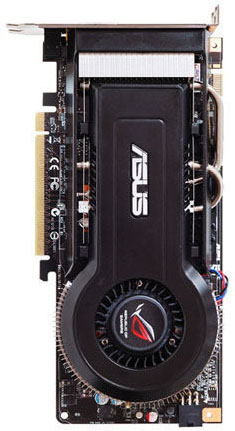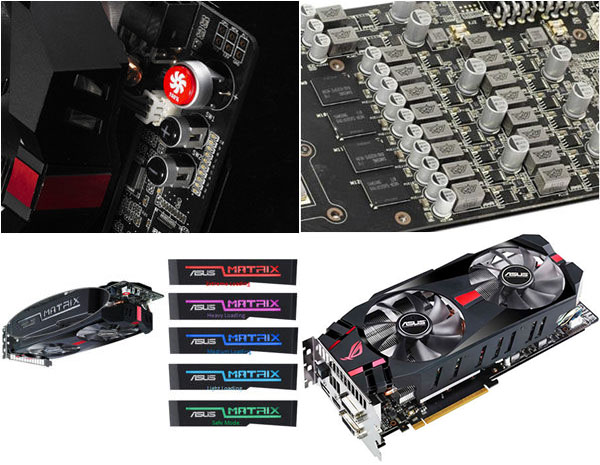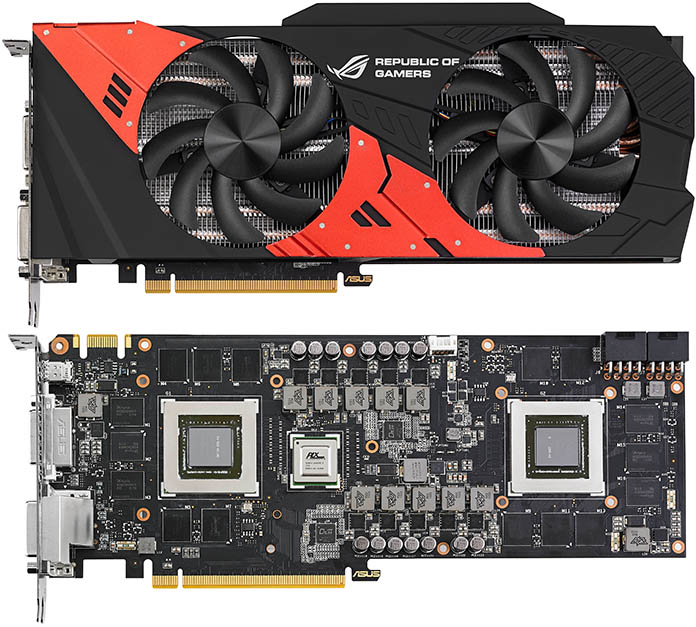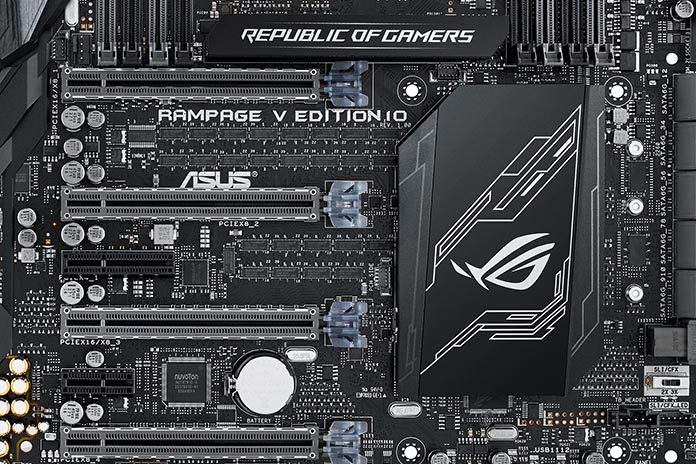Graphics get the ROG treatment
Graphics cards are by far the most important component for gaming performance, so it was only natural for them to join the Republic of Gamer. We didn’t want to slap an ROG badge onto an everyday card, so we applied some of the same philosophies that defined our motherboards, including our obsession with giving overclockers the keys to the kingdom.
 We entered the graphics arena with the Matrix EN9600GT and EN9800GT back in 2008. True to form, you could adjust the clock speed, voltage, and fan behavior with a few clicks using our accompanying iTracker utility. The software had multiple profiles to suit different scenarios, plus real-time monitoring for the GPU, temperature, voltage, and other important variables.
We entered the graphics arena with the Matrix EN9600GT and EN9800GT back in 2008. True to form, you could adjust the clock speed, voltage, and fan behavior with a few clicks using our accompanying iTracker utility. The software had multiple profiles to suit different scenarios, plus real-time monitoring for the GPU, temperature, voltage, and other important variables.
The card itself was loaded with intelligence, like a proactive cooling algorithm that reacted to changes in GPU load rather than waiting for the corresponding effect on temperature. It’s better to spin up the fans before the GPU gets too hot, especially when overclocked.
The Matrix also adjusted the number of active power phases based on the GPU load to ensure optimal efficiency regardless of the conditions. Cutting power consumption reduced the amount of heat for the cooler to dissipate, allowing the fans to spin slower and quieter with light workloads like web surfing and movie watching. With graphics as with motherboards, we firmly believe that civility shouldn’t be sacrificed to maximize performance.
Subsequent Matrix cards provided opportunities to bring motherboard features into the graphics world. The Matrix GTX 285 made memory timing adjustments available through iTracker, bringing a new level of performance tweaking to VRAM. To simplify recovery when tweaking inevitably goes too far, we added a Safe Mode switch that booted the card with its default settings. Overclockers could reach for higher speeds more confidently knowing this reset feature had their back.
The Matrix GTX 285 gave off a multi-colored glow in 2009, long before RGB LEDs became de rigueur. Its illuminated logo changed color based on the GPU load and whether the card was running in Safe Mode, providing an instant visual cue. Even early on, we were exploring ways to convey important system information with colored lighting.

A full-speed fan switch and TweakIt buttons for voltage adjustments appeared on the Matrix GTX 580 that followed, letting overclockers react instantly to changes in system conditions. They could also keep a close eye on voltages using multimeters or oscilloscopes linked to ProbeIt points on the PCB. Add the monstrous triple-slot cooler, and there was no doubt about this card’s extreme credentials.
Much of the work that goes into ROG graphics cards is focused on cooling, where we’ve followed a similar path to our motherboards. The Poseidon GTX 780 brought hybrid sensibilities to graphics with a cooler capable of feeding on liquid and air. Plumbing the Poseidon into a liquid loop lowered temperatures up to 24°C, a significant improvement over traditional air cooling. And it was incredibly easy to do thanks to standard G1/4” fittings compatible with the wide range of barbs used by the community.

Sub-zero cooling is the best way to extract peak GPU performance, but it’s also fraught with frost that creates problems for other silicon. This chilling byproduct can trigger cold bugs in the graphics memory, causing instability that ruins record runs. So we developed a memory defroster to keep the VRAM chips warm enough to avoid problems. Activated at the touch of an onboard button, the defroster is even isolated on a separate circuit to avoid interfering with the power used to run the rest of the card.
ROG graphics cards have drawn considerable inspiration from their motherboard siblings, and the two are capable of working closely together. VGA Hotwire connects pins on both components to enable voltage manipulation via multiple motherboard tweaking interfaces. This tighter integration gives tuners a one-stop shop for full system control.
As a home for the best of the best, the Republic of Gamers has the freedom to explore unique GPU configurations that can only be produced in limited quantities. When NVIDIA watered down its GeForce GTX 285 GPUs to squeeze two of them onto a single PCB for the GTX 295, we developed a dual-GPU Mars card that unleashed the same chips in all their glory. The Mars had higher clocks, a wider memory interface, and double the onboard memory of the top GeForce. Only 1000 units were ever made, each one numbered to underscore the exclusivity that comes with such a rare beast.

The similarly limited-edition Mars II was based on the GeForce GTX 590, but with higher clocks and more memory. We went in a completely different direction with the Mars 760, which paired mid-range GTX 760 GPUs on a single card to deliver Titan-like performance at a much lower price. Although the production run wasn’t limited, the Mars 760 had its own ace in the hole; doubling up on the cards was the first way to run the GTX 760 in quad SLI.

